Bentley Continental GT Speed: Test-Driving a $300,000 Convertible On An Epic Sicilian Road Trip
We took the amazing new Bentley Continental GT Speed on the adventure of a lifetime.
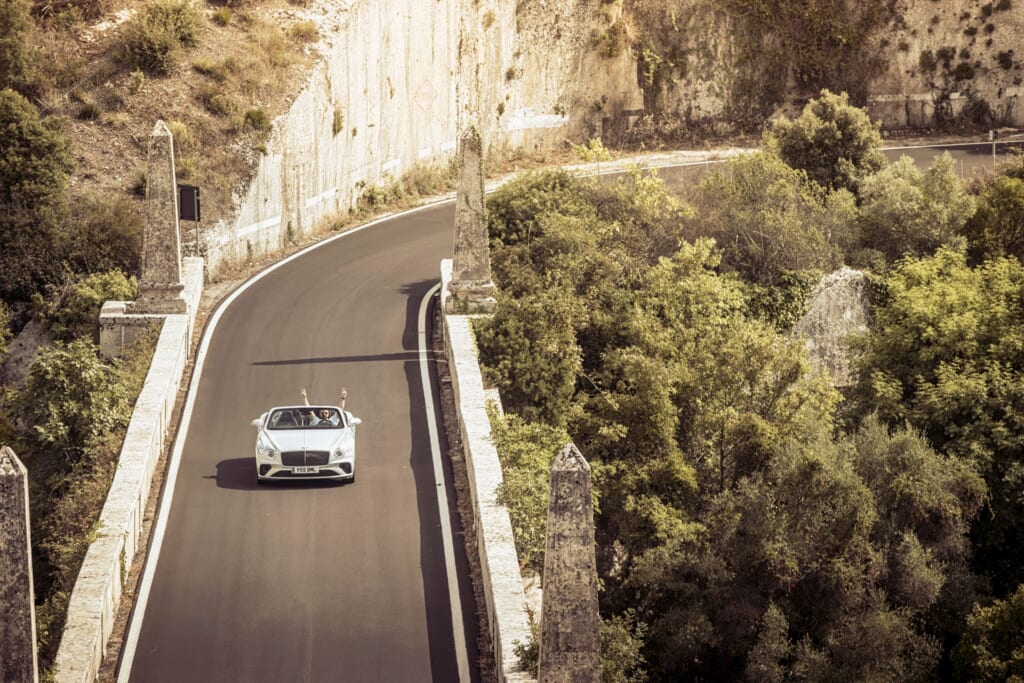
(Stuart Price)
High in the darkening Sicilian sky above the clouds pile up like boulders, their black pregnant bellies outlined in brilliant white from the sun hidden above. The contrast is absurd; never quite seen anything like it. No wonder this country is so religious, you think — with a celestial display like this it’s easy to understand people believing in petty gods who smite all sinners, yet somehow care enough to cut through the darkness with their light.
Then comes the thunder. Rolling north from the Mediterranean over the hills towards our zooming Bentley Continental GT Speed, crackling. But the boom never arrives. I’m not sure if we outrun the clap or if the growl from the apex Continental GT overshadows it, what with the W-12 powerplant’s dozen cylinders howling their own noisy orchestra.
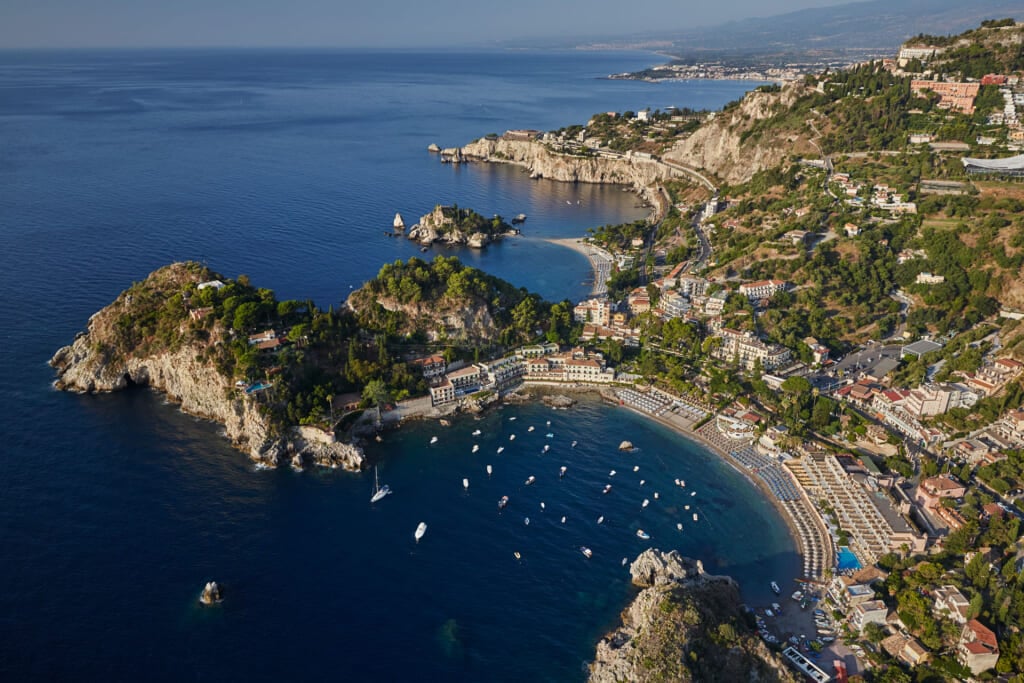
(Belmond Hotels)
Even with the soundsystem turned off so we can enjoy the petroleum combustions the leitmotif of Wagner’s Ride of the Valkyries echoes in my head. The drama is high.
So we whip the GT Speed’s 650 horses over these empty roads to outrun the storm, deeper into the darkening valley towards the shelter of Il San Corrado di Noto. Top down our ice blue coupe zooms past vineyards at speeds eclipsing triple digits. Damp air claws our hair, thick with anxiety that the sky is about to burst over us like a balloon and soak us with a torrent of Mediterranean rain.
Sure we could pull over and raise the roof — but what would be the fun in that?
Here we fear nothing. Something about the $300,000 Bentley’s calm assurance removes any trace of unease. Soon the sprawling white villas of the Il San Corrado di Noto peek on the hillside before us and we pull past the heavy gate under the valet’s umbrella. Just then the thunder finally cracks open, and with a boom the sky unleashes a flood of warm water.
The rain is biblical. Within minutes currents are overwhelming the runoffs, portions of the street are flooded a foot deep. It feels like the sort of tempest Homer punished Odysseus with.
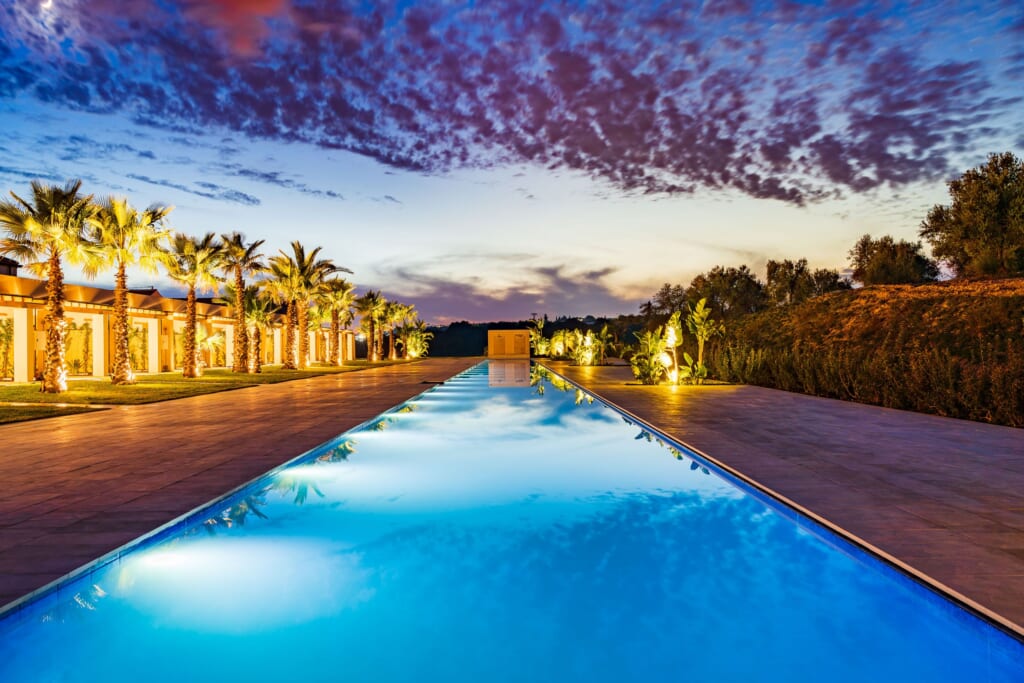
(Il San Corrado di Noto)
But it’s too late for any poet or god to smite us as we run to take shelter in the region’s first five-star hotel. Dry and content by the warm hearth we enjoy a bottle of Nero D’Avola wine and plates of sardines and Pasta alla Norma — a traditional Catanian ziti dish of sautéed eggplant, marinara and basil topped with ricotta salata cheese — by Ciccio Sultano, Il San Corrado’s consultant Chef and owner of the two-Michelin starred Duomo Restaurant in nearby Ragusa Ibla.
Previously a vast olive orchard and honey farm owned by Prince Nicolaci, the modern resort was built because its owner Paolo Gionfriddo — an impeccably dressed gentleman with a shock of white, perfectly-coiffed hair — wanted to bring to his parent’s home the level of hotel he’s experienced traveling the world.
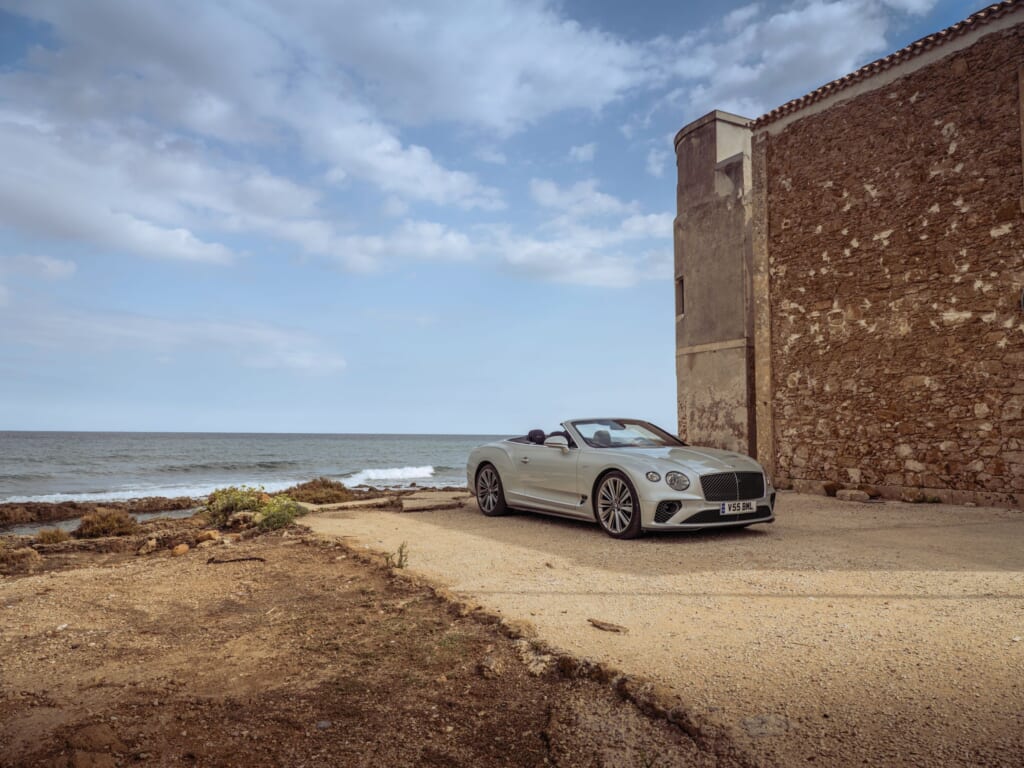
(Stuart Price)
Gionfriddo tells me the 34-room retreat spread out over 14 hectares was inspired by the Aman brand — specifically by their expertise on space, architecture, service and privacy. Il San Corrado’s vast pools, one bigger than a soccer pitch, and secluded nature of the well-appointed rooms are evidence of his achievement.
At night we sleep in luxurious comfort, bellies full as overhead the ancient thunder gods throw bolts at each other in angry tantrums.
“Sicily’s geography has rendered it arguably the world’s greatest cultural melting pot.”
The Art of Doing Nothing
A couple days later we bid arrivederci to the Il San Corrado di Noto and slip back inside the GT Speed. Closing the Bentley’s heavy doors with a significant click, we fire up its W-12 and point the Flying B on our hood north towards Cefalù.
A small UNESCO World Heritage village on the Tyrrhenian Sea dating back at least till the 5th century B.C., Cefalù boasts another five-star resort we look to indulge in: the family-owned Le CaLette, opened in 1969 on a cliff overlooking the turquoise waters of Caldura bay.
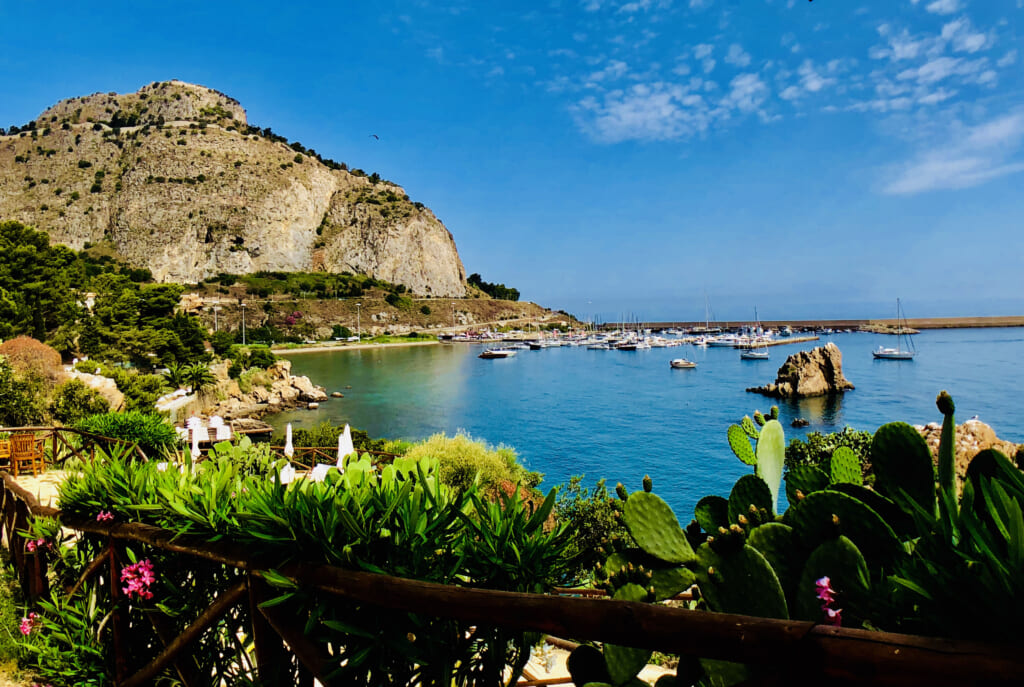
(Le CaLette)
Unlike our last day of motoring this afternoon could not be more idyllic. Today the Gods are happy. Piercing north from the southern half of the island is a driver’s paradise: while Sicilian asphalt is well-worn to say the least, the roads are utterly barren of car, moped or bicycle. Luckily it is Sunday so everyone’s at home relaxing with family or at church.
We too are in church in a way, worshipping at the altar of Walter Owen Bentley, a visionary who imagined an automobile that could both win the LeMans (which Bentley did five times between 1924 and 1930) and still offer its owner handcrafted luxury nearly unmatched by any marque.
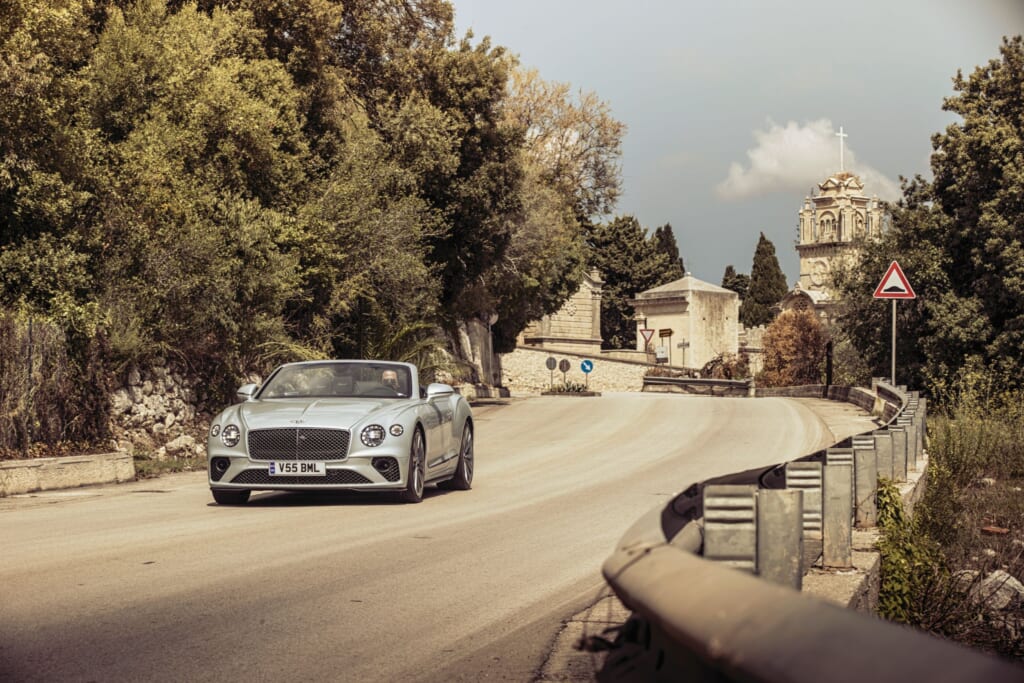
(Stuart Price)
The magic in the entire GT Continental lineup is its duality: one part muscle car, one part exquisite luxury sled. Not a blend mind you but a conflation — meaning it’s not a milquetoast compromise, eking out a bit of both but not quite enough of either to satisfy. When you want luxury the Conty dials down the testosterone, ties on a silk ascot and morphs into the most opulent cloud of luxury this side of the now-defunct Mulsanne.
When you want muscle, however, it unleashes into a 100% torque twisting supercar — especially in this GT Speed variant, the apex performance Continental model.
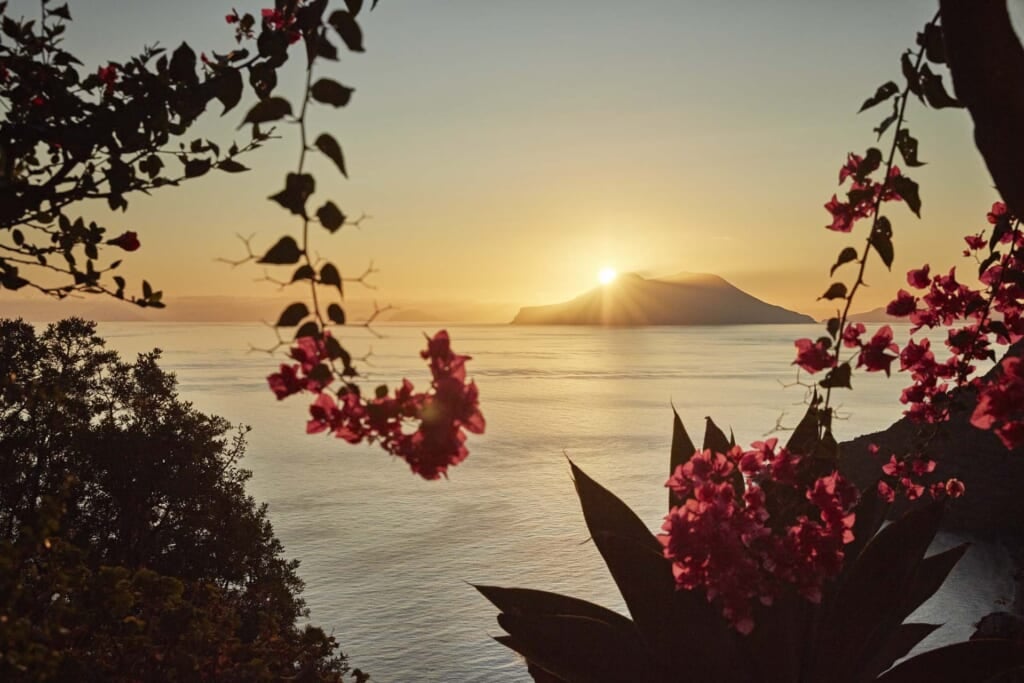
(Belmond Hotels)
Every time a long straight opens up in the ancient two-lane roads a push of the aluminum throttle engages a comet, its massive 6.0-liter powerplant generating 664 pound-feet of torque for absurd acceleration — enough to slingshot the three-ton coupe from 0-60-mph in just about 3-seconds. It’ll keep going until you hit 208 mph, or you run out of straight. Or a stray goat crosses your path.
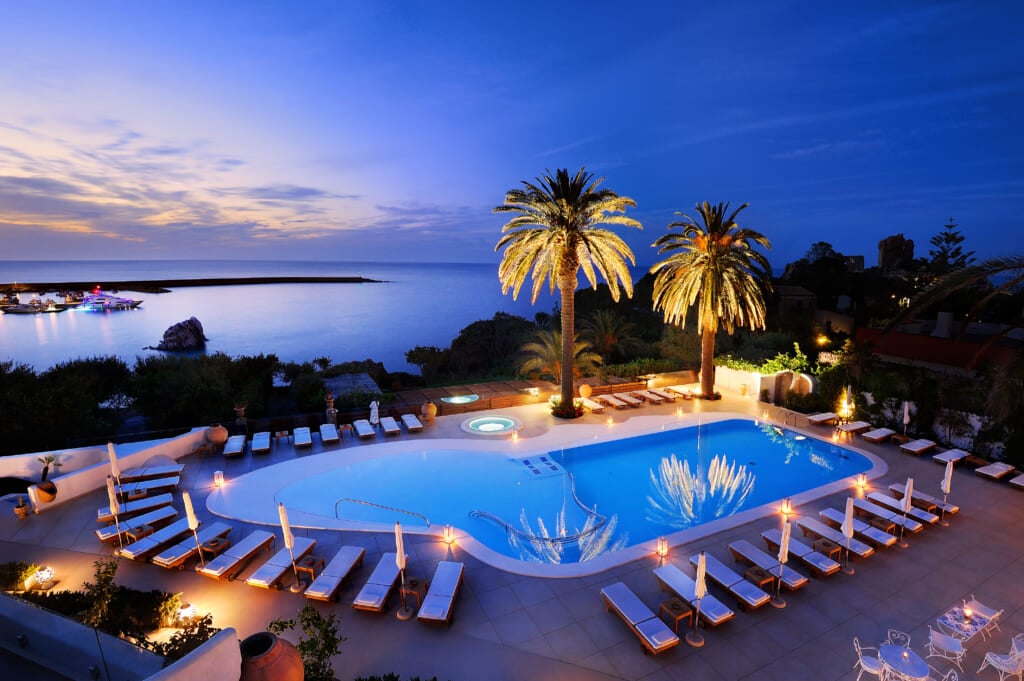
(Le CaLette)
A decade ago if you’d put a gun to my head and forced me to choose only one vehicle for life I’d have selected a mid-engine supercar with a Raging Bull, Prancing Horse or Swoosh on its hood. But no more. Without a moment’s thought give me a high-performance luxury grand tourer to explore exotic landscapes like this.
Everywhere you look reminds you this is God’s Country. Or rather in Sicily’s sake, Gods’, as over the past three millennium a pantheon of peoples — and their deities — have claimed this land as their own. Zeus, Thor, Osiris, Jupiter, Taranis, Yahweh and many more have at one point or another held dominion over this island — a rocky hub of the Mediterranean battled over by nearly all its ancient civilizations.
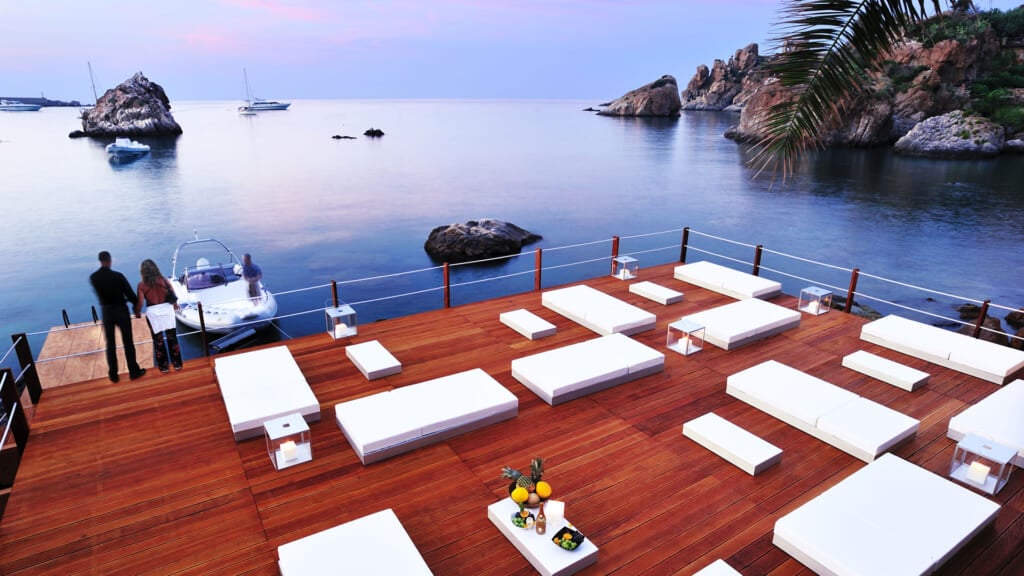
(Le CaLette)
A perfectly centered jump-off point for trade, exploration or invasion, Sicily’s geography has rendered it arguably the world’s greatest cultural melting pot: You see it in the road signs, often written in both Arabic and Latin. You taste it in the Cύscusa blending Mediterranean seafood with Moroccan couscous; Arabic arancia oranges and spicy peppers fire up the pasta. You hear it in the singsong language, and absorbed into the architecture. This ancient polychromatic kaleidoscope may be Sicily’s most profound impression.
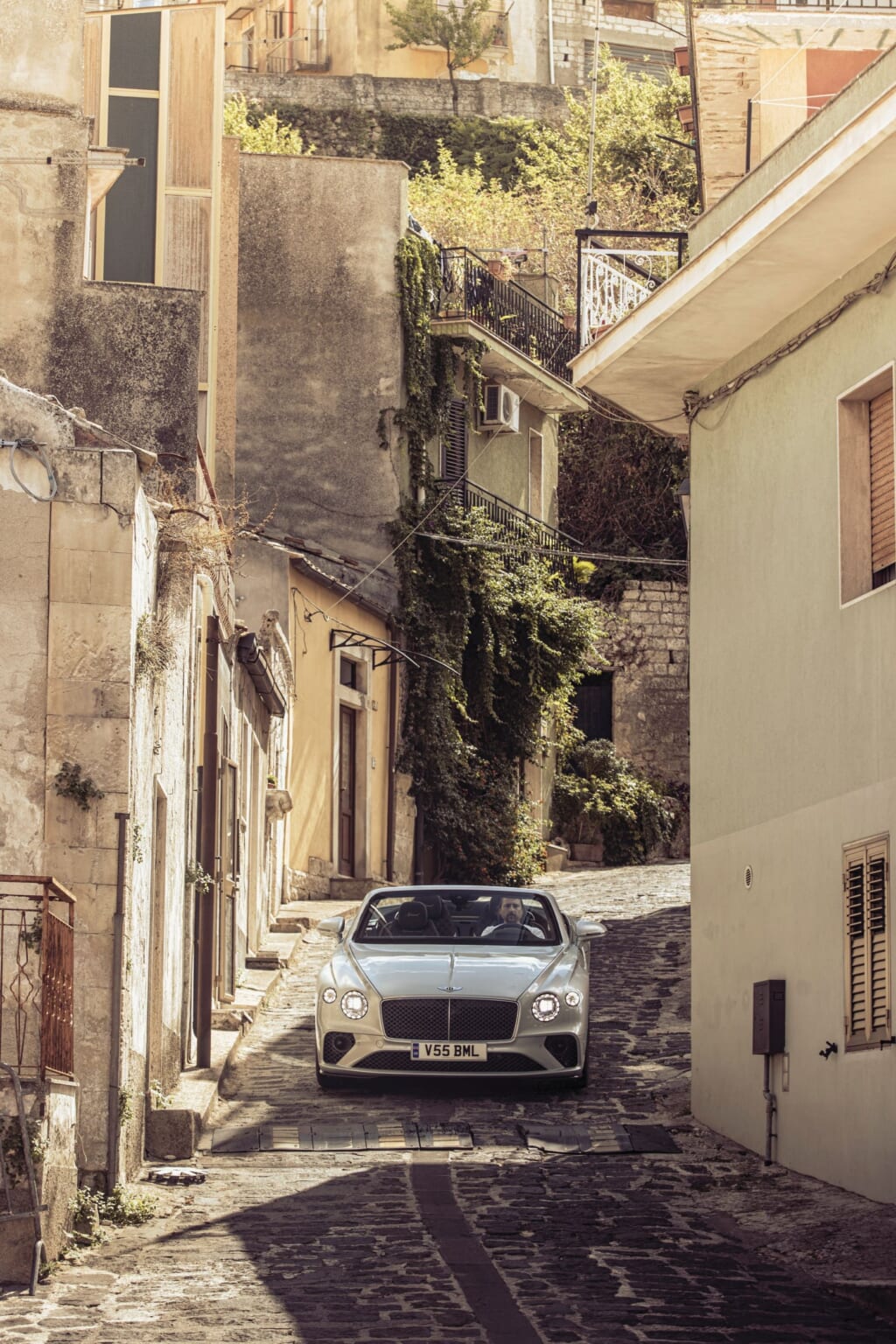
(Stuart Price)
A beautiful motorist’s dream later we crawl along the narrow littoral roads of Cefalù, with its massive promontory guarding the bay, and glide to a stop outside Le CaLette. The whitewashed hotel features bright pink bougainvillea tumbling from suite balconies down to a quiet pool overlooking the azure bay. We dine at the open air Cala Luna, where daily the breakfast spread of pastries, fresh juices, omelet bar and a galaxy of Italian breads and cheeses sets up your day for the pleasures of doing absolutely nothing.
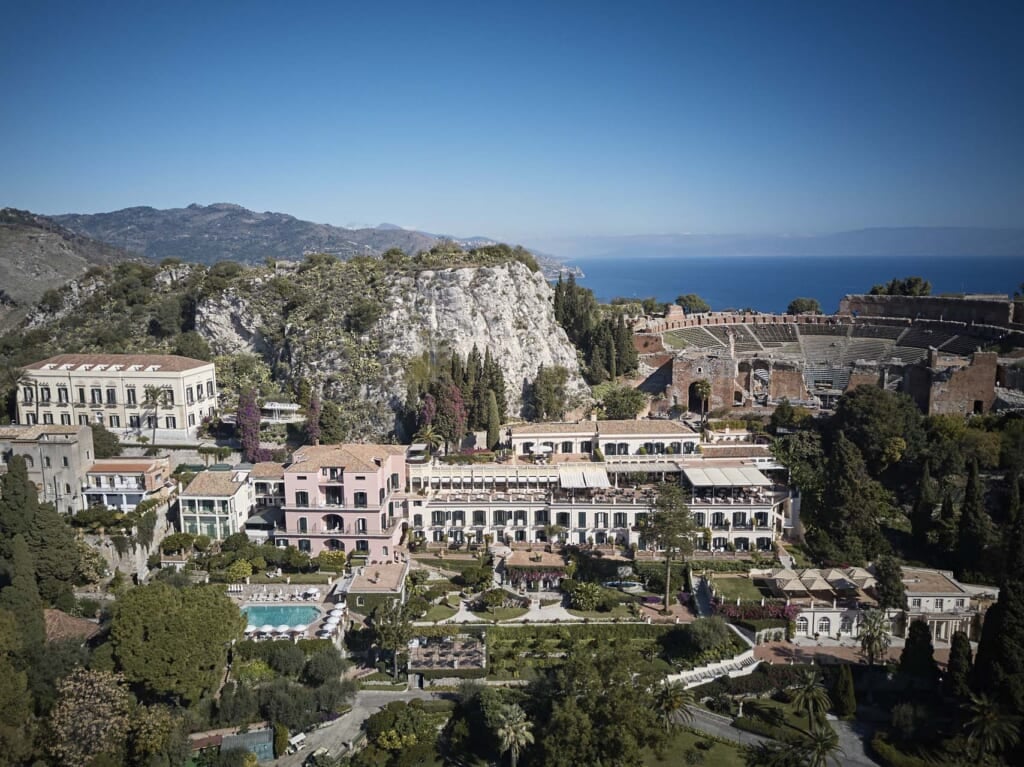
(Belmond Hotels)
Undoubtedly the pearl of Le CaLette is its Reef Club. Set in the cove far below the sheer cliffs, consider it ground zero for studying the centuries-old Italian art of Il Dolce far niente – ‘the sweetness of doing nothing at all.’ Eliminate any and all ambitions.
There’s nothing to do on the wide wooden terrace but drink icy Campari tonics beading with moisture, read a dog-eared novel and thank the Gods for their abundance. There’s no breeze per se, only the occasional shifting of air; in direct sun your flesh seers in minutes, but under the shade of a wide umbrella the climate is perfection. Serene.
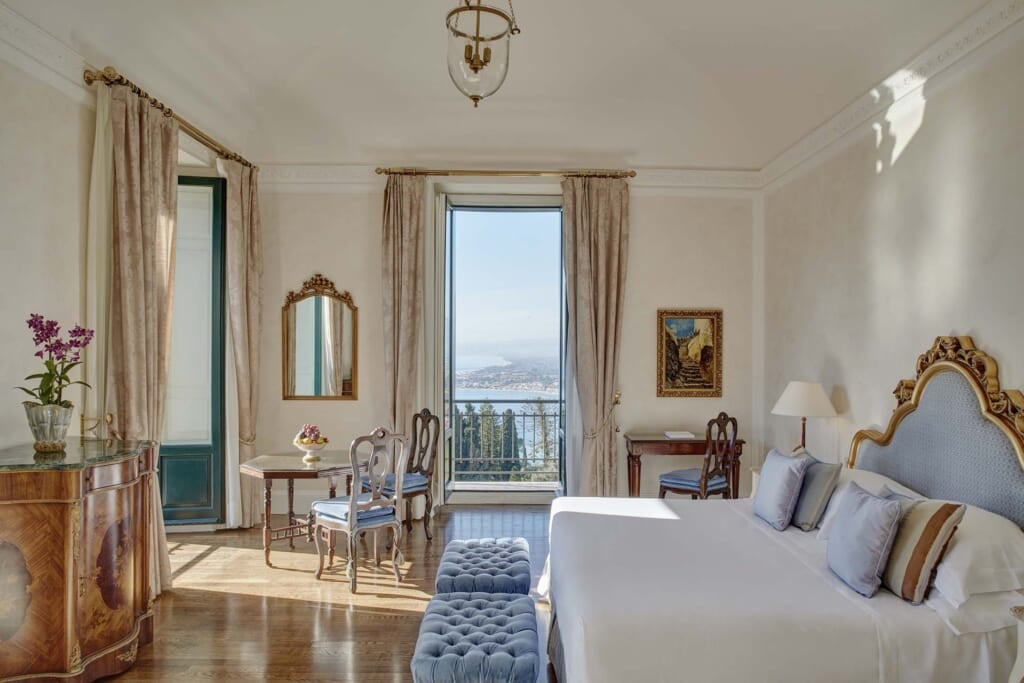
(Belmond Hotels)
The only sounds are the lapping of small waves against rocks underneath and the occasional chatter of the seagulls. When you feel like it take a dip in the cool Mediterranean, the clear water creating wondrous hues of blue over the mosaic of golden rock that lines the bay.
At night you’ll find a lonely piano player tickling keys by the pool to no one in particular. Perhaps because it’s post-summer peak, perhaps because of restricted travel, but Le CaLette feels like it’s directly catering to your whims. We belly up to the bar, tell the head barman Tony to make us something Sicilian.
We amble back to the pool where only one other couple sits quietly enjoying the music, the promontory lit up as backdrop, above it the sky inky black. Every 30 seconds or so the beam from a lighthouse swings across the star-filled sky like a batter fouling deep into the stands.
The Twin Belmond Wonders of Taormina
It’s not easy saying goodbye to Le CaLette as we prepare for the third and final leg of our Sicilian adventure. But the bustling tourist mecca of Taormina, not to mention our Bentley chariot, awaits. Today we take it easy on those horses, however. Whereas on previous days we leaned heavy on the performance aspect of the GT Speed on this afternoon we sink into its luxurious womb.
The drive is as close as it gets to that scene in La Dolce Vita, the Bentley usurping the role of the happy British roadster from the 1958 Triumph TR3 — except that our 21st century droptop unspools more horsepower than aircraft from the Triumph’s era.
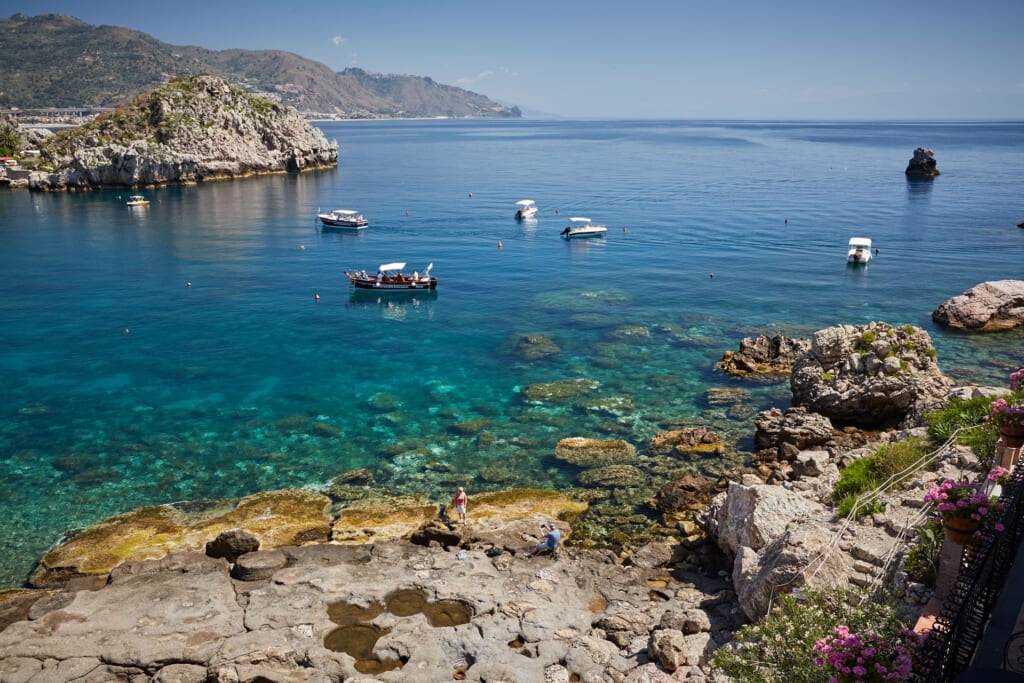
(Belmond Hotels)
Riding along the coastline the landscape looks like it was drawn by a child who hasn’t yet been taught that swaying palms, towering pine trees and flowering cactus cannot all exist in the same place. Turns out, in Sicily they can.
The Trinacria (triangle in Greek) comes to mind, the three-legged Medusa who centers the official flag of the autonomous Sicilian region. Each leg symbolizes a corner of the island, her serpent hair entwined with ears of corn, symbol of the island’s fertility. As we steer the GT Speed to Sicily’s third leg this abundance is not lost on us: engaging the massage program the front thrones knead our soft muscles like calves before the slaughter.
“The magic in the Bentley GT lineup is its duality: one part muscle car, one part exquisite luxury sled.”
Through the 2,200-watt Naim for Bentley soundsystem the voice of Sade pours out of the 18 speakers like warm chocolate, the deep bass notes occasionally vibrating our glutes via the kinesthetic shakers buried in our leather seats. The Sicilian sun shines in clear skies; everything is right in the world.
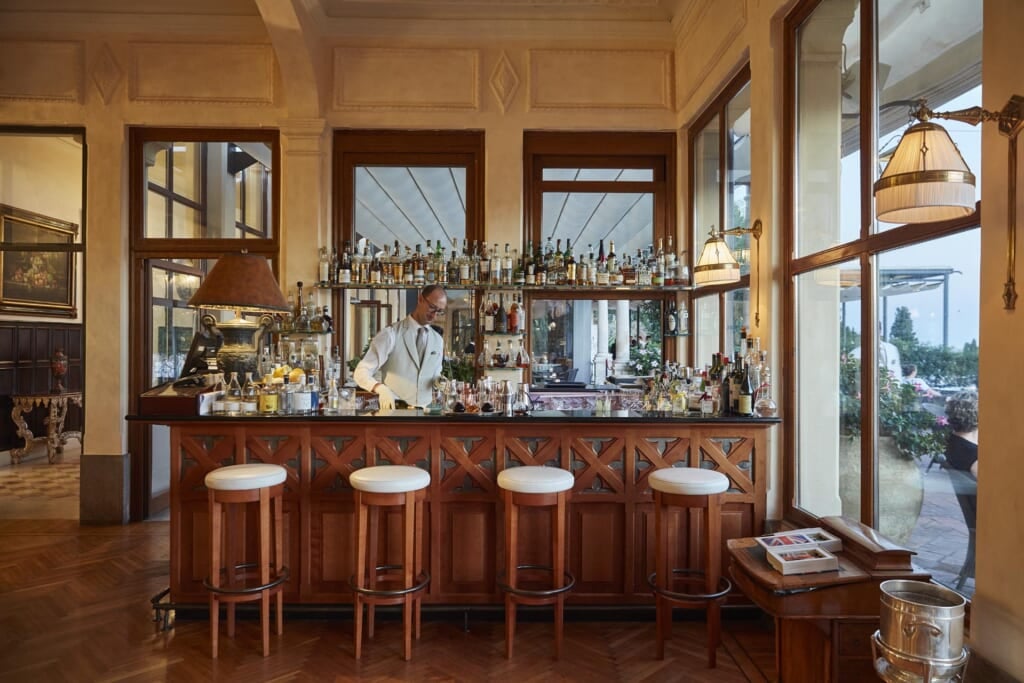
(Grand Hotel Timeo Belmond)
As one of the most visited areas in all of Sicily the medieval village of Taormina has many destinations to offer, but perhaps none more than our twin Belmond resorts: one spread up high in the mountains and one down by the water.
After the long drive negotiating the vertical switchbacks of these cliffs, the sight of the former’s opulent terraced gardens — like something out of a Keira Knightley costume drama — feels well-earned. When the gates of the Belmond Grand Hotel Timeo open up before us it’s almost like St. Peter is waving us in.
The city’s first hotel — built under the shadow of the Teatro antico di Taormina, a Hellinistic amphitheater from the third century BC — the Timeo’s lavish grounds embody a level of profound, palpable glamour that one fears has long left this planet. Together with its sister hotel the Villa Sant’Andrea by the water, these twin Belmond properties offer demanding explorers a truly peerless 1-2 punch.
One can sleep here in the lush elevated gardens of Taormina and shuttle down to the coast for a day of beach laying, or do the inverse: stay by the water for convenient beach access and shuttle up to Grand Hotel Timeo to enjoy its sophisticated and more cosmopolitan luxuries.
Some point to Otto Geleng, one of the rare Michelin-star restaurants in Sicily, as a highlight. Chef Roberto Toro’s exquisite creations are plated amongst a milieu that emulates a chateau dinner party — replete with fine crystal glassware, handstitched tablecloths and the jewel-like pastries of Chef Corrado Assenza.
Or the rooms that could double for royal suites, with marble bathrooms, glimmering chandeliers and closets larger than some Manhattan apartments. Expansive terraces look out to the sea, pool and gardens below.
And those gardens… perhaps most convincing of the Grand Hotel Timeo’s unparalleled luxury. Verdant, filled with tree species culled from around the globe, and blooming more flowers than a Colombian jungle. This summer they set up Giardini di Luce, the hotel’s first open-air exhibition where during the evening you could stroll among LED churches and glorious light sculptures, among glowing ballerina dresses that haunt the lush lawns like frozen ghosts.
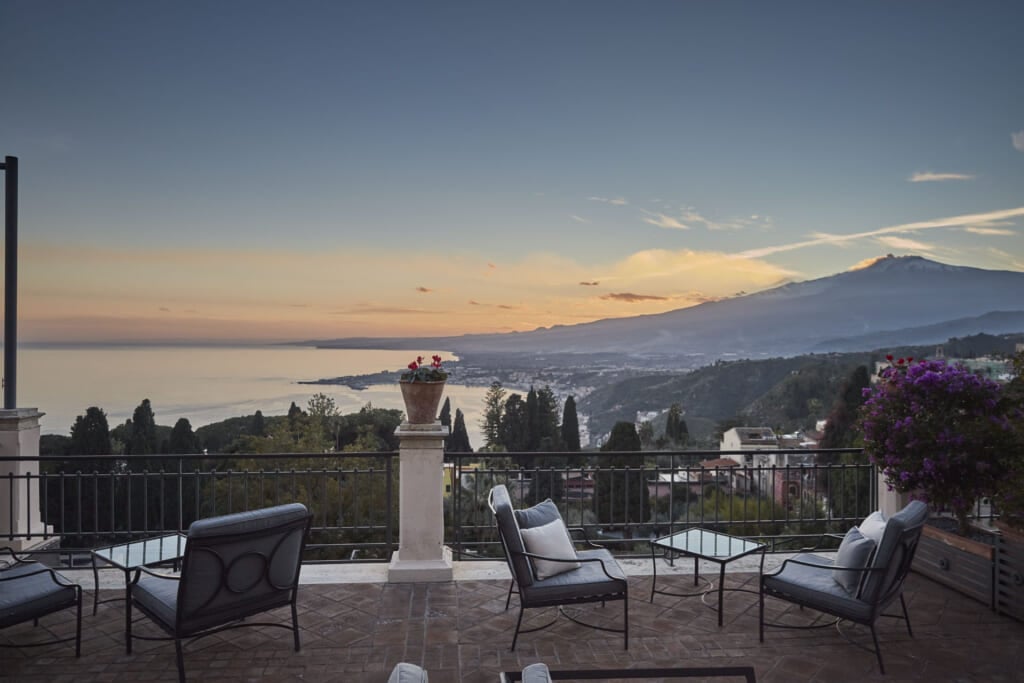
(Belmond Hotels)
But nothing resonates more than the Grand Hotel Timeo’s famed Literary Terrace — a flagstone deck overlooking the gardens and friendly terracotta rooftops spilling down towards the Ionian Sea far below.
Order a dirty martini from the beautiful fin de siècle bar, where a crisply vested tender arranges garnishes before shelves lined with ancient cognacs, single malts bought at auction, rums plucked from distant Polynesian islands and a murderer’s row of rare Italian amaro bottles. The glass-walled room echoes with the joyous clatter of ice tumbling into champagne chillers, the sound of bowling balls nailing a strike in slow motion.
It is nearing sunset, that euphoric hour when anywhere on the planet signals the beginning of the hero’s journey. We sit in meditation, cocktail in hand, watching the sun set around the smoldering peak of Mount Etna in the far distance. Its apex crowned in fluffy smoke absorbing the Sicilian sunset like crystals, refracting the colors into sanguine hues. We quietly take in the same view D.H. Lawrence did while writing Lady Chatterley’s Lover on this very terrace, as did many other renowned authors before us, earning the Literary Terrace its name.
One thinks about this island and its profound saga on western culture, how many people and civilizations have come here and disappeared into record. All this history, all this time, all this beauty.
You think about how this adventure all began — with angry thunder, biblical storms, lightning and terror. Yet this on this twilight not a cloud hangs in the reddening sky. Sicily’s inhabitants chat nonplussed, long ago abandoned caring about the politics of the Gods.
Follow Nicolas on Instagram at @nickstecher and @boozeoftheday.
